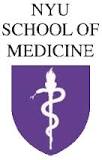Optic Nerve Head Structural Response to IOP Elevation in Patients With Keratoconus
| Status: | Not yet recruiting |
|---|---|
| Conditions: | Ocular, Ocular, Dermatology |
| Therapuetic Areas: | Dermatology / Plastic Surgery, Ophthalmology |
| Healthy: | No |
| Age Range: | 18 - 90 |
| Updated: | 4/6/2019 |
| Start Date: | June 2019 |
| End Date: | July 2020 |
| Contact: | Edward Pei |
| Email: | edward.pei@myumc.org |
| Phone: | 646 501 8741 |
The mechanism by which vision loss in glaucoma occurs is still unknown, but it is clear that
increased Intraocular Pressure (IOP) is a major risk factor. It is also thought that the
lamina cribrosa (LC) is a site of primary damage during the pathogenesis of the disease. The
changes caused by intraocular pressure (IOP) modulation at the level of the optic nerve head
and LC will be evaluated in the present study. Subjects with keratoconus exhibit abnormal
collagen properties that can impair their LC behavior. By evaluating their lamina
biomechanical response we can advance our understanding on the role of the lamina in glaucoma
pathogenesis. A better understanding of the process will ultimately lead to improved
detection and management of glaucoma.
It is hypothesized that subjects with keratoconus have an abnormal biomechanical response of
the lamina cribrosa in response to IOP modulation.
increased Intraocular Pressure (IOP) is a major risk factor. It is also thought that the
lamina cribrosa (LC) is a site of primary damage during the pathogenesis of the disease. The
changes caused by intraocular pressure (IOP) modulation at the level of the optic nerve head
and LC will be evaluated in the present study. Subjects with keratoconus exhibit abnormal
collagen properties that can impair their LC behavior. By evaluating their lamina
biomechanical response we can advance our understanding on the role of the lamina in glaucoma
pathogenesis. A better understanding of the process will ultimately lead to improved
detection and management of glaucoma.
It is hypothesized that subjects with keratoconus have an abnormal biomechanical response of
the lamina cribrosa in response to IOP modulation.
Inclusion Criteria:
Candidates must meet the following inclusion criteria in order to participate in the study.
- Ability to provide informed consent and to understand the study procedures
Keratoconus:
- Clinical diagnosis of keratoconus
- Central thinning of the cornea
- Abnormal posterior ectasia.
Glaucoma:
- Glaucomatous ONH abnormality: rim thinning, notching, undermining (excavation) or
diffuse or localized RNFL defects that are characteristic of glaucoma.
- Two consecutive abnormal SITA standard perimetry tests with GHT outside normal limits.
Exclusion Criteria:
Candidates that meet any of the exclusion criteria at baseline will be excluded from study
participation.
- Media opacity (e.g. lens, vitreous, cornea).
- Strabismus, nystagmus or a condition that would prevent fixation.
- Diabetes with evidence of retinopathy.
- Previous intraocular surgery or ocular trauma (with the exception of laser procedures
and subjects that have undergone uneventful cataract surgery more than 6 months from
enrollment date).
- Neurological and non-glaucomatous causes for visual field damage.
- Any intraocular non-glaucomatous ocular disorders.
We found this trial at
1
site
550 1st Ave
New York, New York 10016
New York, New York 10016
(212) 263-7300

Principal Investigator: Chaim Wollstein, MD
Phone: 646-501-8741
New York University School of Medicine NYU School of Medicine has a proud history that...
Click here to add this to my saved trials